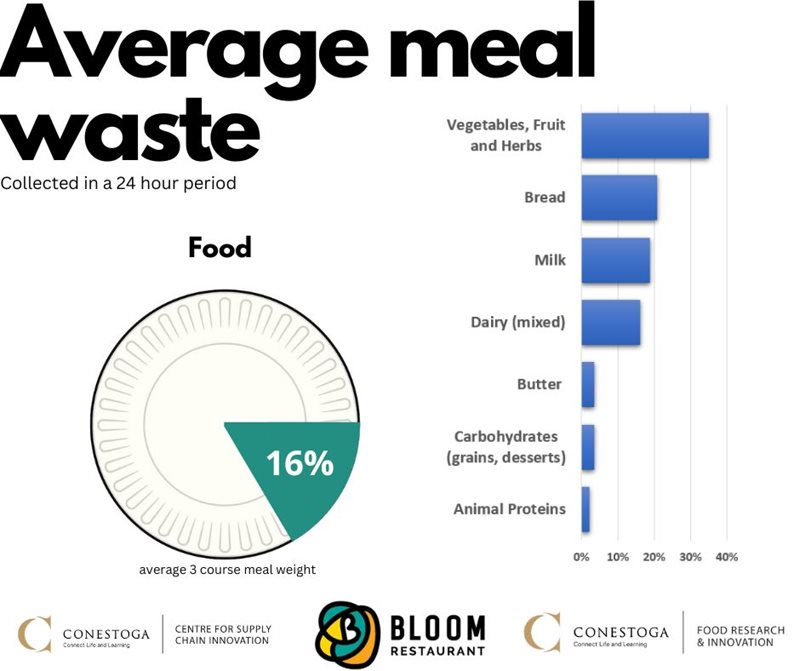Reducing food waste
Reducing food waste can alleviate pressures on society, the environment, and the economy. For example, foodbank use in Canada is at an all-time high, according to Food Banks Canada. During March 2022, there were 1.5 million visits to food banks, up 35 per cent from March 2019 (Food Banks Canada (2022)). Identifying sources of food waste can help divert more resources to food banks, ensuring vulnerable populations get the help they need.
Environmentally, when food is wasted, it also means that the land, water, feed, fertilizer, fuel, and other resources are also wasted. These wasted resources add up to 56.5 M tonnes of CO2 equivalent emissions (Gooch et. al. (2019)). Organic waste decomposing in landfills contribute methane gas that is 25 times more damaging to the environment than carbon dioxide (Waste Reduction Week in Canada (2022)).
What the team has learned so far
A food waste audit was conducted in fall 2022 with waste from Bloom being separated into landfill waste, recyclables, compost/organics, and plate waste. It was found that 76 per cent of waste from Bloom is organic waste totaling 65.2 kg or 152 lost meals. A further food waste audit was conducted in winter 2023. Studying plate waste, it was found that beverages accounted for 48 per cent of waste during the one day study period.
How we will continue to reduce food waste
We will use organics as an opportunity, increase diversion rates from the waste stream, and be mindful that all edible parts of the food are consumed. The waste hierarchy diagram ranks the preferred approaches to waste management from most preferred to least preferred. The most preferred is:
- Prevent
- Reduce
- Reuse
- Recycle
- Recover
- Dispose

Food waste reduction tips for consumers
- Monitor your food waste to look for patterns and ways to reduce (what gets measured gets done).
- Only purchase what you can consume, using a meal plan helps to reduce waste.
- Store food properly to ensure it is able to achieve its full shelf-life.
- Use leftovers/trimmings creatively for example use bones and vegetables for stock.
- Use compost bin or residential compost to reduce impact at landfill.
- Accurately sorting all waste and ensure recycling streams are not contaminated.
Food waste reduction tips for restauranteurs
- Conduct a food waste audit to identify root causes of food waste and loss.
- Use FIFO (first in first out) and DOH (days on hand) to ensure ordering for need.
- Use specials menu to allow use of ingredients that may be nearing use by dates.
- Assess plate waste to “right size” servings.

